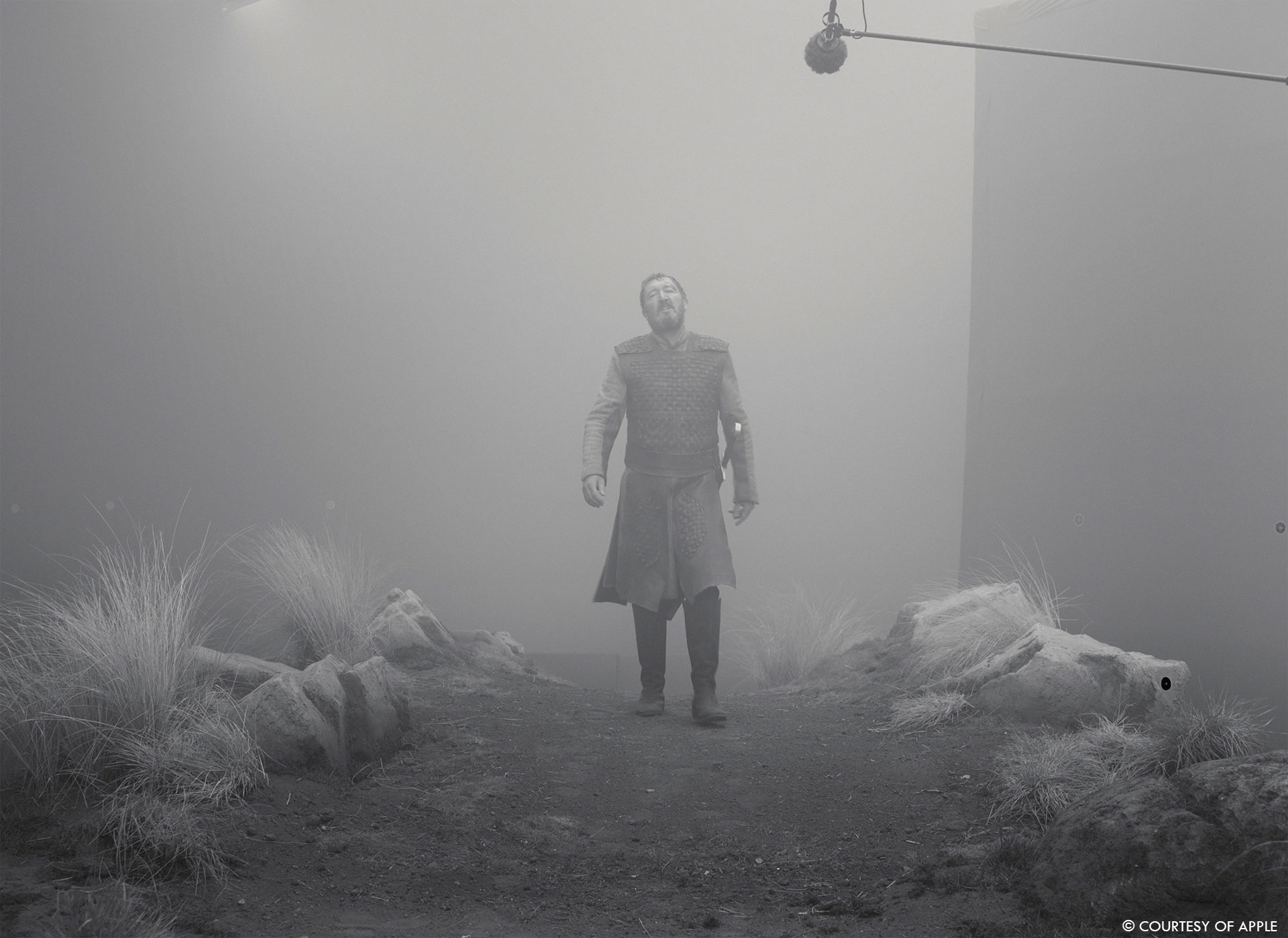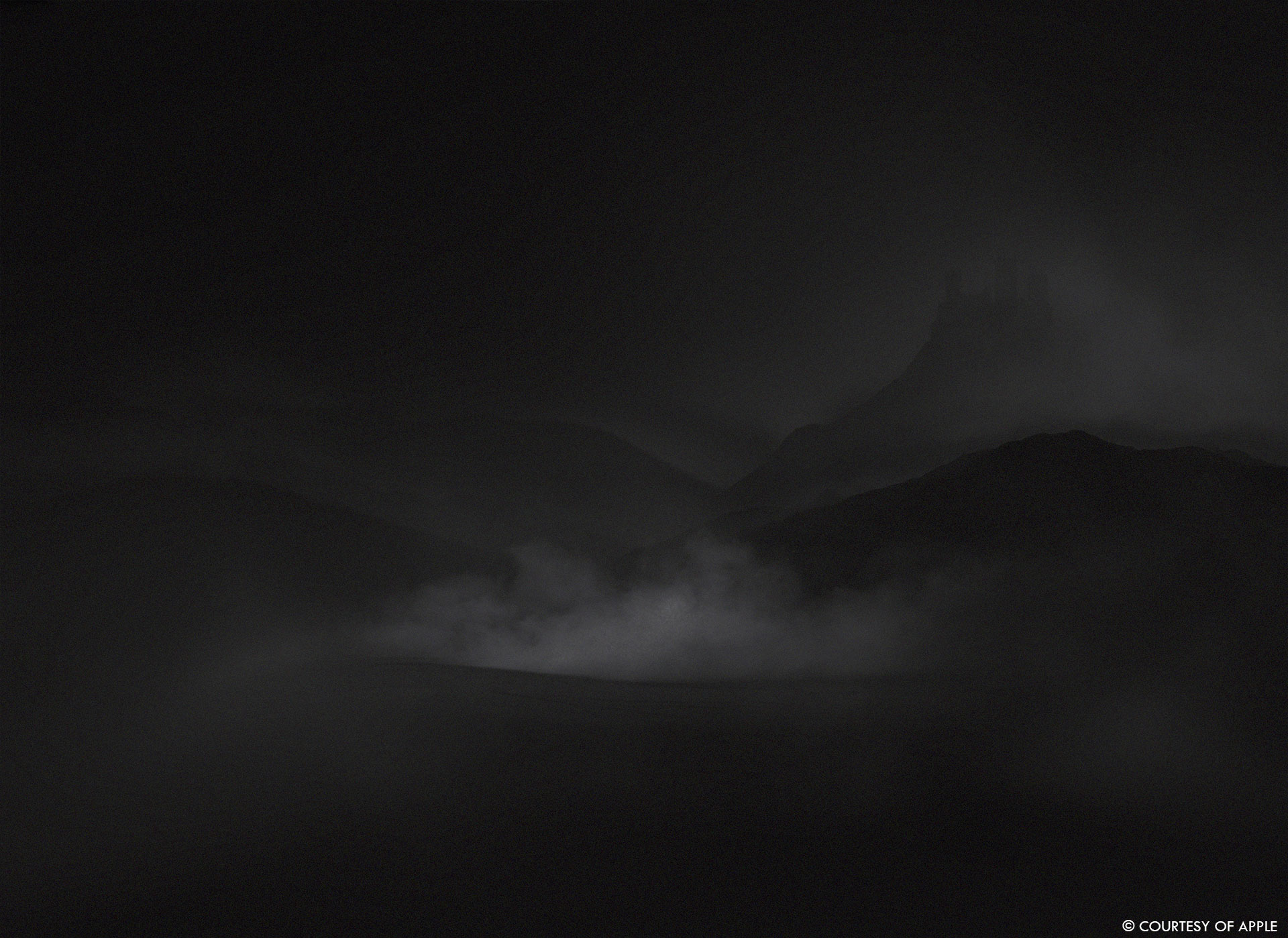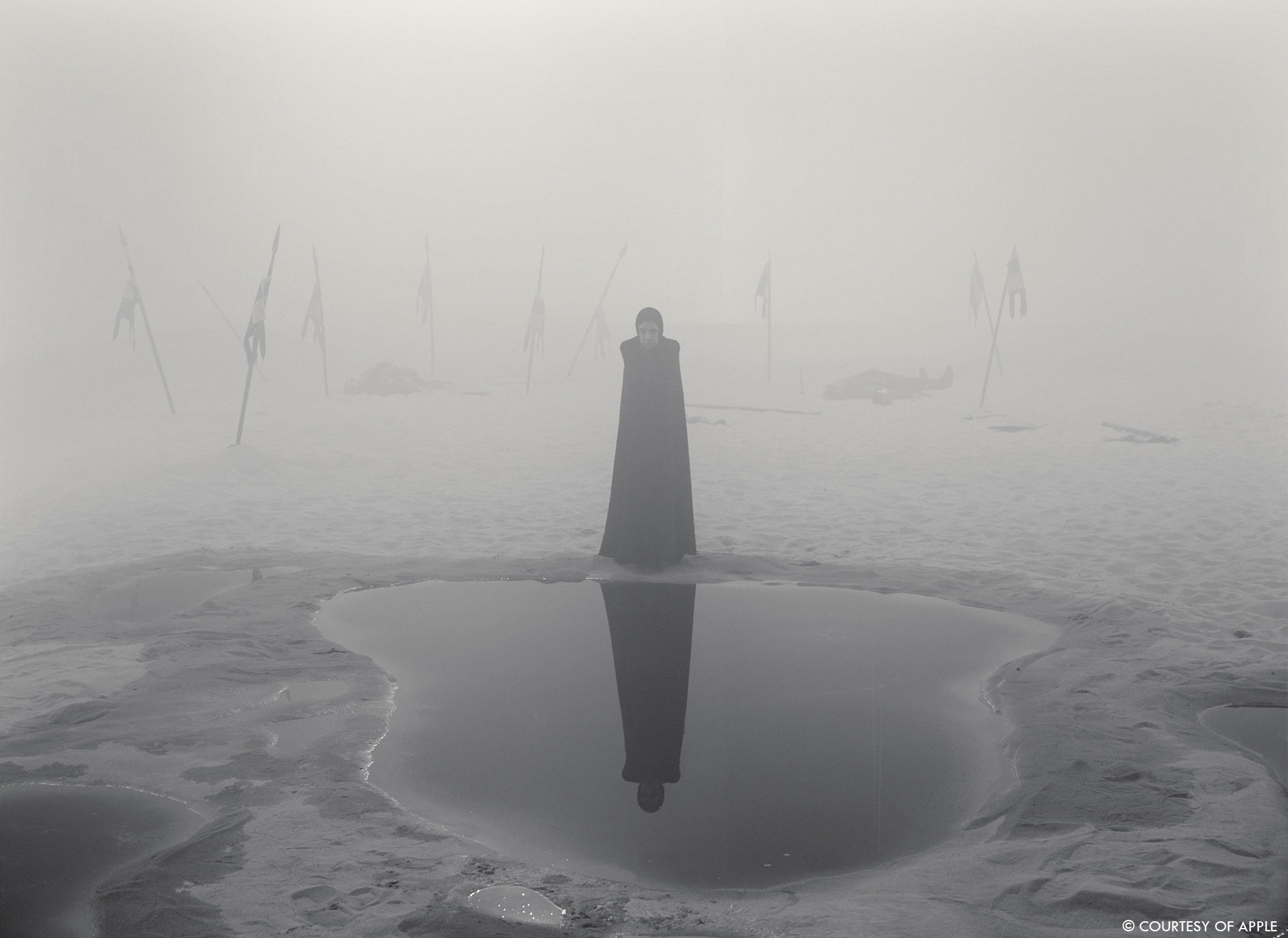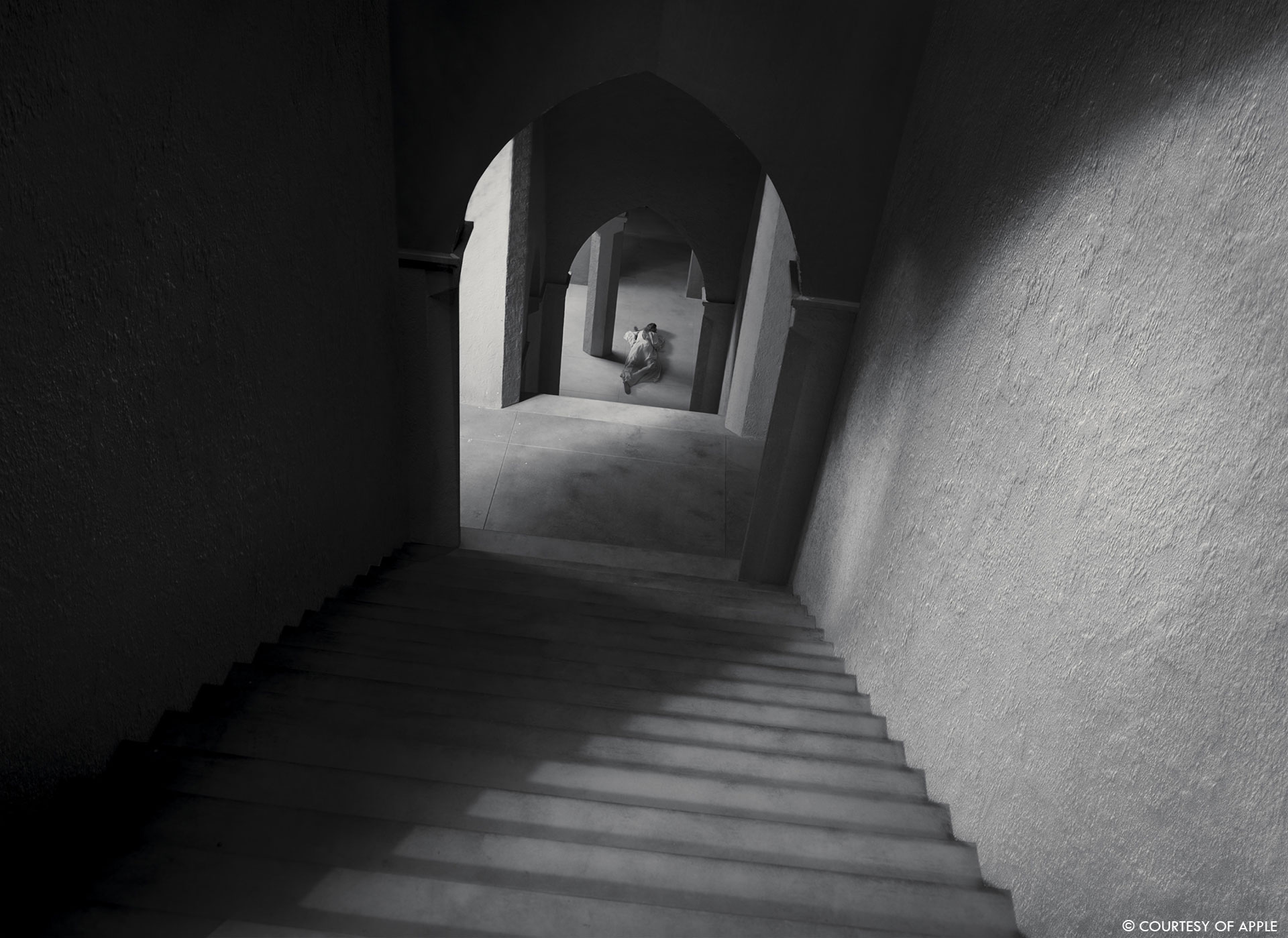After telling us about the visual effects work created by East Side Effects for The Ballad of Buster Scruggs in 2018, Alex Lemke and Michael Huber went on to work on Triple Frontier, Gemini Man, Project Power and I’m Thinking of Ending Things.
How did you get involved in this movie?
Alex // We have worked with Joel and Ethan before (on Inside Llewyn Davis and The Ballad of Buster Scruggs) so there is already a personal connection.
Michael // In April 2019 we met with Joel and he told us he was going to do Macbeth. He introduced us to some of the early ideas – like the opening scene with the birds circling in the sky and the idea of the witches’ reflections in the pool. We also discussed environments and fog, and transitions between shots at the time.
How was this new collaboration with Director Joel Coen?
Alex // It was a bit weird working on this film without Ethan for the first time, though he did come to visit the set.
What was his approach and expectations about the visual effects?
Michael // It started with a collection of reference images that Joel and Bruno (Delbonnel) put together that would reference lighting styles, geometric shapes and architecture – so we all could get a feel for the general style of the movie they were developing. During pre-production we had some more meetings and started to narrow down some of these ideas and also began look-dev on some of the sequences.
When the shoot started we decided to be there for every single shooting day – VFX and non-VFX days alike to collect set data and continue the look-dev. Our office was right next to the sound stages. So – one of us could be on set and the other one could be at the office and do some lookdev or slap comps and show them to Joel and Bruno.
Alex // In the end we had every single slate that was shot on that film, all the dailies and access to all the raw footage so we were able to do the editorial temp comps working on the full resolution images right from the start. There are some comps in the film that are the exact comp versions that we originally did in April 2020.
Michael // Also it was quite helpful that we knew every shot in the film. So if Joel decided later in editing that some shot would become an effects-shot we had no problem tracking that down and just adding it to our pipeline.



How did you organize the work between you two and with your VFX Producer?
Alex // We didn’t have a Producer or Coordinator – we shared these duties amongst ourselves. We use Shotgun (now Shotgrid) as our main organizational tool and we have custom scripts for review and deliveries so this was a very straightforward process for us. We also updated Post Production Supervisor Catherine Farrell and Producer Bob Graf regularly about any budget changes.
When it was clear that COVID would force us to work on this film from home, we asked our pipeline engineer Michael Millspaugh to help us adapt our existing workflow to accommodate for that. Production gave us access to the original raw footage and we did all the pulls ourselves in Resolve. This was a great approach to save time and costs.



It’s a really special movie, what was your approach about it?
Michael // Our work needed to fit seamlessly into the style of the movie that Joel and Bruno had created. It became quite obvious that this was not about realism but to help create this abstract environment and tell the story – beautiful and unsettling at the same time.



Can you elaborate about the various environments and set extensions?
Alex // They were a mixture of traditional 2D Matte Paintings like the Entrance to the Great Hall or MacDuffs Castle, and 3D Set Extensions like the Ramparts at the End or the Trees in the Throne room. Early in pre-production it was decided that most sets would be built as full scale versions on sound stages in LA, with VFX only extending behind them. During our extended Post-Production we were blessed to still have access to Production Designer Stefan Dechant, who is an excellent Illustrator – some of his Artwork ended up as Final in the film!



What kind of references did you receive for the environments?
Michael // The collection of images we mentioned earlier eventually developed into a lookbook for the film that also contained illustrations by Stefan. Joel also referenced some movies like Night of the Hunter, Sunrise, Passion of Jean D’Arc and Throne of Blood.



How does the square aspect and the black & white affect your work?
Alex // The aspect ratio didn’t really affect us that much. The movie was shot on an Alexa LF and Alexa LF Mini, so to get to the Academy aspect ratio of 1:1.33 the left and right side of the image were masked. While production was briefly considering shooting the film in actual B/W, this was abandoned to allow for more flexibility in the final grade. That meant our pulls were in color and we then applied the dailies grade per shot with a CDL/Shot Lut combination. The color information for every single take of the film was stored in our ShotGrid database and then pulled down automatically when creating the initial comp version (or version 0). From a compositing point of view working in Black and White certainly made some things easier – obviously Blue Spill wasn’t an issue. 🙂



There is a really special character with the Witches. Can you elaborate about her?
Michael // It started with a picture of a little girl standing on a pond that Joel showed us and something was wrong with her reflection in the water. He liked that idea and we started experimenting with different types of altered reflections. From there the idea evolved for the witch to have two reflections.
All of her movements are performed live by the amazing actress Kathryn Hunter who plays all three witches. So we shot her performance in different positions on the pond and then created the effect that the additional two witches are created from the doubled reflection of the first one via a smoke transition.



Can you explain in detail about the creation and animation of the crows?
Michael // We had two different approaches for the various raven shots in the film. Since Alex had shot ravens for another film in the past we had quite a lot of bluescreen raven material in our library and the filmmakers from back then were nice enough to lend it to this production. We used these wherever it would fit the needs of a particular shot. In shots with very specific direction for flight path and speed – like the opening sequence or the apparition chamber – we knew we had to create CG birds.
We have a long-standing collaboration with this german company BigHugFX. So we talked to their VFX Supervisor Benedikt Laubenthal about it and they built the ravens.
For the final shot of the film we used a combination of raven elements and CG ravens distributed by a particle system.
Can you elaborate about the various stylish transitions?
Alex // Early in the project Joel was very interested in not just making this a filmic adaptation of a stage play, but actually show the mechanics involved in this, like having backdrops fall into the set and so on. We didn’t talk about this during the shoot, but in post it came up again as an idea – rather than doing a straight dissolve having a more elegant way of transitioning between scenes. Since most elements weren’t shot with that in mind we had to adjust the plates to make them work for that. This meant extending the plates with matte painting elements to allow for camera moves and camera tracking them to match them together.
Going from Macbeth’s tent to Lady Macbeth in her hallway is a good example. We tracked the push in onto the tent in the A plate and then applied this move to the B side. To make it seem like we are seeing through the fabric of the tent the layers were combined with a variety of techniques like multiplying them to make it seem like the B side was actually being revealed on stage. Heavily defocusing the B Side while allowing the texture of the tent fabric to remain visible made for a very beautiful transition.



Did you want to reveal to us any other invisible effects?
Alex // The crossroads set would probably be a good candidate for that. Early on we talked about what would be the best approach for doing this – shooting this against blue screen or a practical Backdrop? We decided on the latter, with Matte Painter Roger Kupelian doing a high resolution cloud background that was printed onto a curtain and that Bruno could light live on set. While this allowed for a lot of shots to be filmed in camera, there were plenty of times where you could see folds in the backdrop, or it wasn’t tall enough and was cut off at the top of the frame and needed to be extended.



Which sequence or shot was the most challenging?
Michael // Definitely the final shot of the film. It was originally planned as a locked-off shot with Ross riding down the hill and disappearing behind the ridge. Then the flock of birds rises and we pan away with them into the sun. All of this was pretty clear and Stefan had done great artwork for it.
Alex // But then Bruno and Joel decided to add a camera move to it in post. That basically required rebuilding the entire shot as a 2.5D matte painting. Additionally the idea came up to add grass blowing in the wind since this shot was supposed to feel like the Scottish Highlands. There was no budget for a full CG grass simulation so we decided to try using grass plates we had shot for “The Ballad of Buster Scruggs” – from the Tom Waits episode. Alex picked some and made a layout which is basically what’s in the final film.



Is there something specific that gives you some really short nights?
Michael // Nö ? !
Alex // Not at all. It was one of the best work experiences I ever had in my life.
What is your favorite shot or sequence?
Alex // The End Shot.
Michael // The Throne Room fight.



What is your best memory on this show?
Alex // For me it was having the time to try out stuff. Since we had such a lot of time we were able to experiment with different approaches, even if it meant that they wouldn’t work right away. And I finally got to learn 3D! Having been in this industry for almost 30 years now, I always found it hard to make the switch from Compositing to actually working in 3D. But having the time I actually got pretty good in Blender. When (Spoiler!) Macbeth gets killed in the end, Joel wanted him to throw away his crown, but no elements were shot for this. So my friend Kelly Chang scanned the prop for us and I animated it.
Michael // It’s always great when we are brought on early in a project. Being able to be part of the process – how the movie develops from rough ideas through the design phase and then into the actual shots – is the most exciting part for me. And on this one I really enjoyed the close collaboration with Joel, Bruno, Stefan and the co-editor Lucian Johnston across the entire time of production.



How long have you worked on this show?
Michael // We had early conversations in 2019 – then pre production started for us in mid January 2020. The shoot went from beginning of February until we were shut down due to Covid mid March.
Alex // We started working on shots pretty much right after and when shooting started again in July, we asked Michael Ralla if he could cover set supervision duties for us (as traveling was still very restricted back then), and he did a great job!
Final Shot Delivery was mid May 2021, so we “really” worked on it full time for 16 months.



What’s the VFX shots count?
Alex // The film has a total of 403 VFX shots, of which we did more than half pretty much ourselves – including all the big hero shots.
What is your next project?
Michael // We just finished work on the TV show “Dexter: New Blood” and a movie called “When You Finish Saving the World” directed by Jesse Eisenberg. Currently we are working on a TV show called “Severance” directed by Ben Stiller and movie called “The Marsh King’s Daughter” directed by Neil Burger.



Finally – we’d like to give a shoutout to the rest of our small VFX team:
Big thanks to
Our compositors: Sabrina Tenore, Danica DeVito, Michael Millspaugh. Rich Pernice, Artur Elson and Osvaldo Andreaus.
Camera Tracking: Christoph Gaudl
CG and Sim work: Benedikt Laubenthal & BigHugFX in Munich
Prop scanning: Kelly Chang
Roto: BOT VFX.
A big thanks for your time.
// The Tragedy of Macbeth – VFX Breakdown – East Side Effects
WANT TO KNOW MORE?
East Side Effects: Dedicated page about The Tragedy of Macbeth on East Side Effects website.
Apple TV+: You can now watch The Tragedy of Macbeth on Apple TV+.
© Vincent Frei – The Art of VFX – 2022




